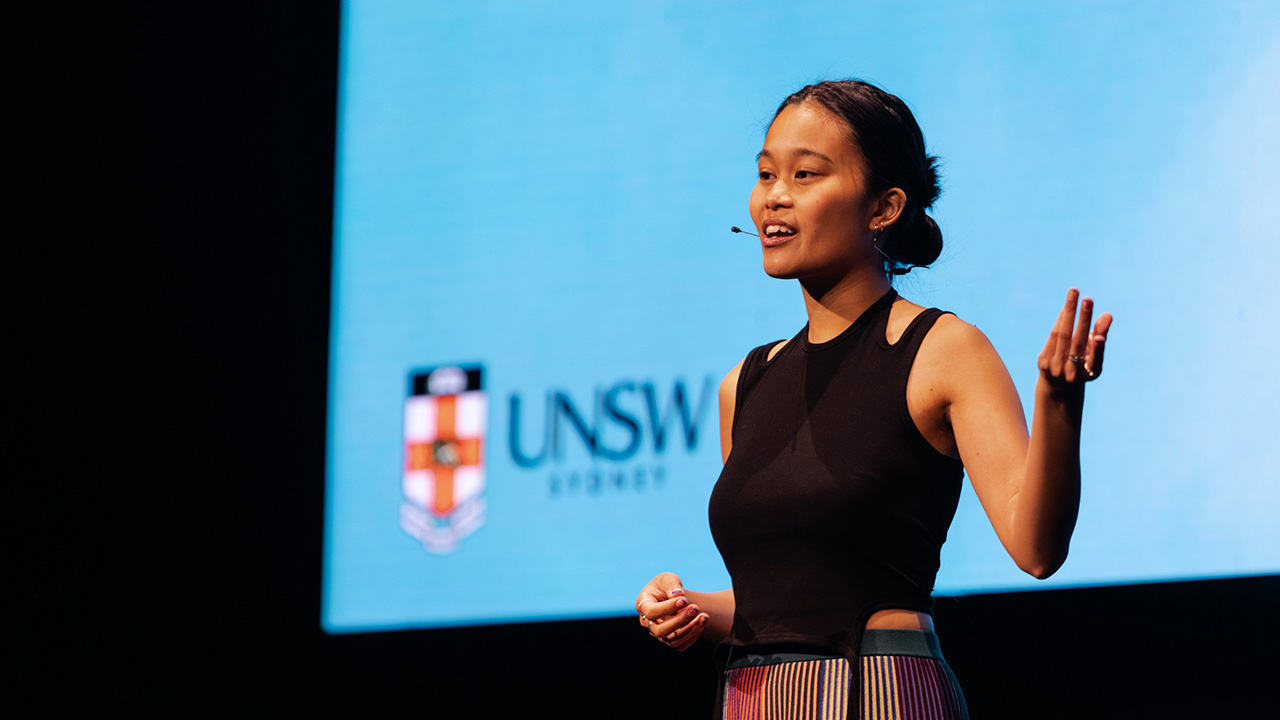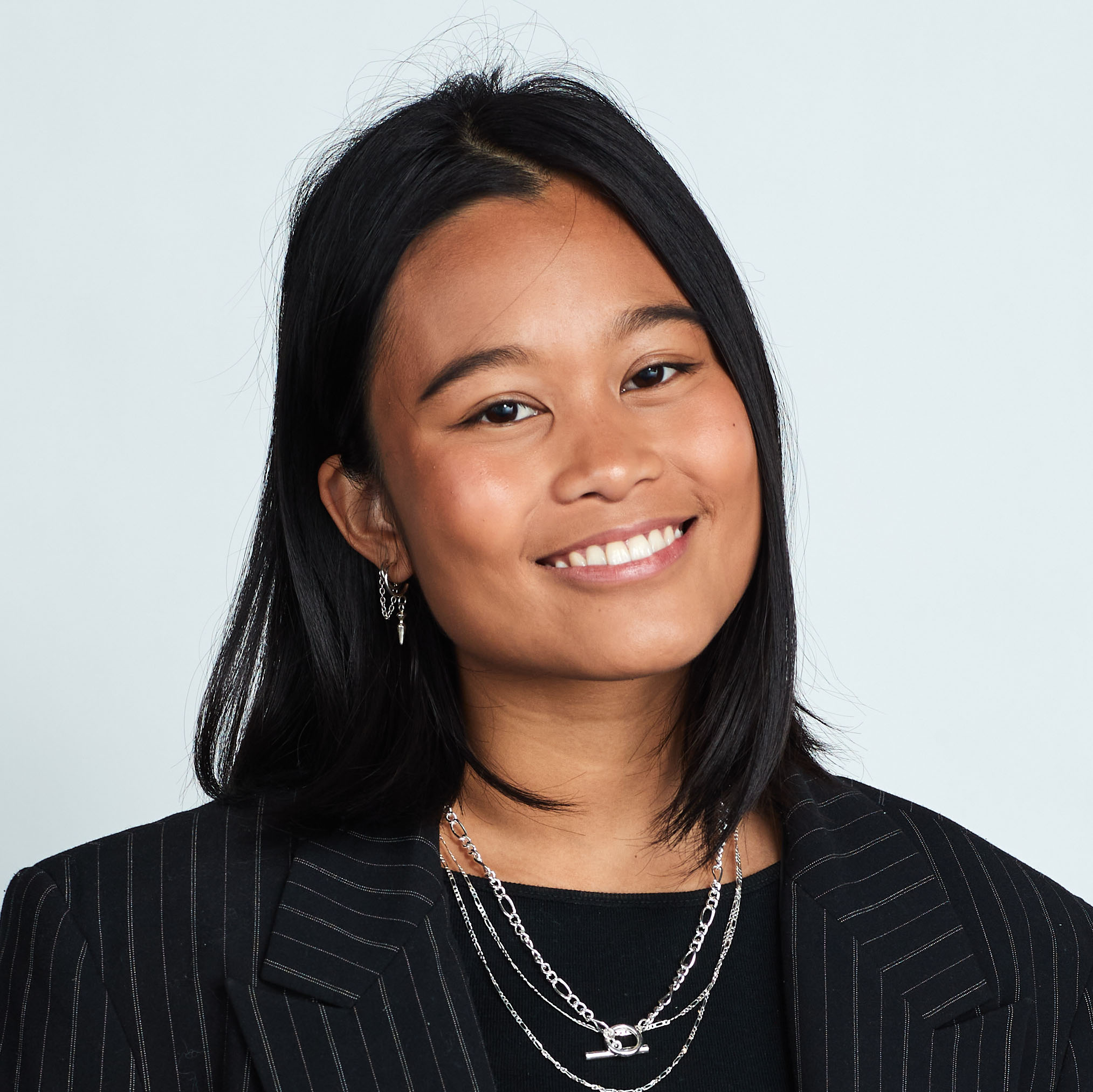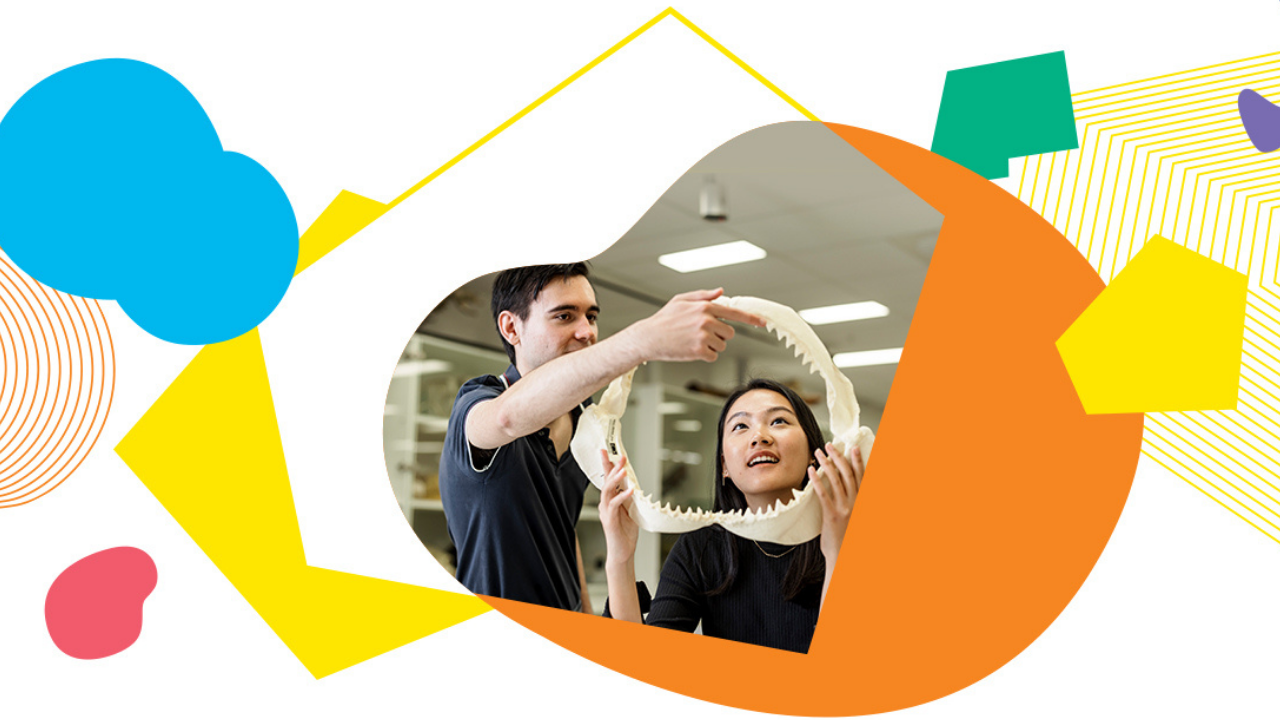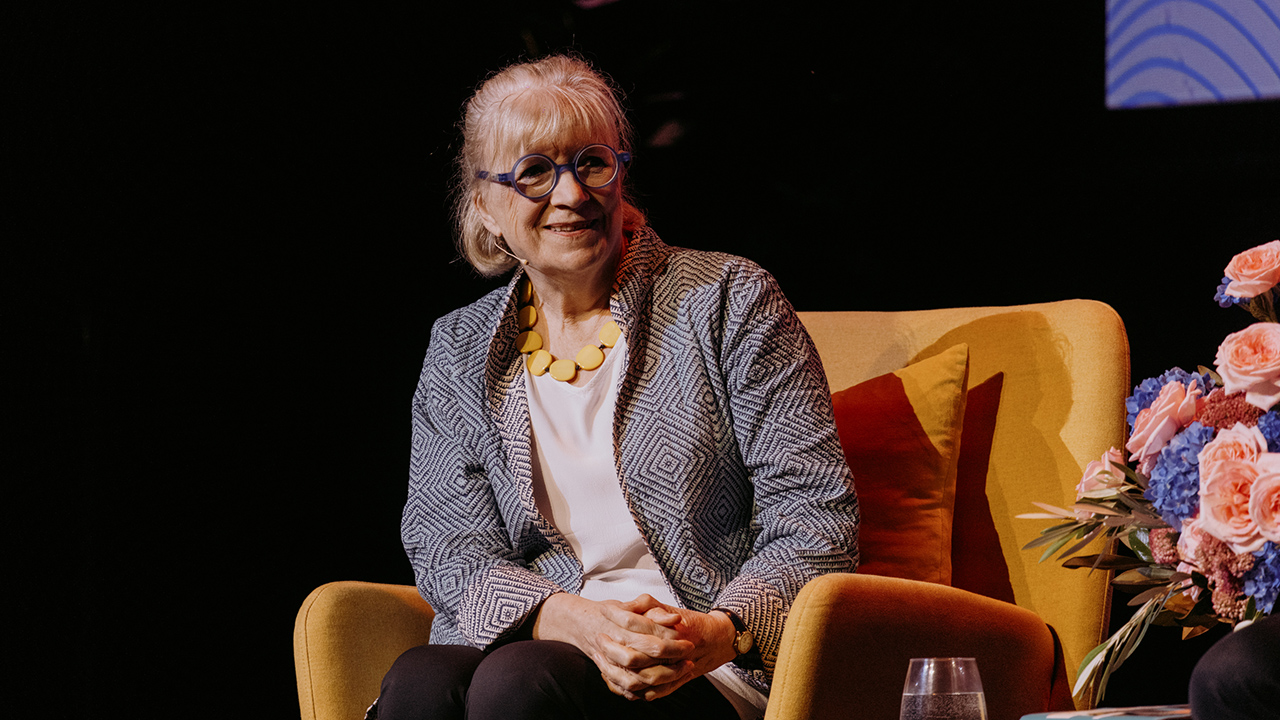Cheyenne Bardos | Facing our fear of race

We must unlearn perfection – this idea that we can just not be racist – and understand that anti-racism is an ongoing journey riddled with mistakes.
When was the last time you looked at yourself in the mirror and asked, ‘am I racist?’. We like to think of ourselves as progressive and politically aware, but what if we’re more racist than we think?
No matter our intentions or beliefs, the society we live in presents whiteness as the desirable norm. This means that on many levels, we often do too, and we routinely act in ways that reinforce this. If we don’t look at racism as something that goes beyond our individual beliefs, we make it harder for ourselves to disrupt a racist status quo. As both individuals and as a society, we have an engrained fear of being labelled racist or even starting conversations about race, but perhaps addressing this fear head on is exactly what we need to do to achieve equality.
This talk was a part of Fresh Blood, an event of short talks in the 2022 Festival of Dangerous Ideas.
Transcript
UNSW Centre for Ideas: Welcome to the UNSW Centre for Ideas podcast. A place to hear ideas from the world's leading thinkers and UNSW Sydney’s brightest minds. The talk you are about to hear, Facing our fear of race, features UNSW Sydney student Cheyenne Bardos, and was recorded live. This talk was a part of ‘Fresh Blood’, an event of short talks in the 2022 Festival of Dangerous Ideas.
Cheyenne Bardos: First, I’d like to acknowledge the Gadigal People of the Eora nation, who are the Traditional Custodians of this land we gather on today. While this festival celebrates bold ideas and learning, I recognise that its existence is preceded by thousands of years of Indigenous knowledge that continues today, especially within Redfern – an epicentre of First Nations activism, community and culture. I pay respect to Elders past and present, and all Aboriginal and Torres Strait Islander people here today.
Now, I want to ask: what do you think a racist looks like? Who would they vote for? What would be the colour of their skin? What if I told you that a racist looks exactly like me? I know that may sound strange to many of you. It wasn’t that long ago that I would’ve frantically dismissed that thought as absolute nonsense, too.
So, let’s go back to that time, to 2018, when I first started university, freshly moved from Wagga Wagga in regional New South Wales to Sydney. Like many bright-eyed students who left high school with impressive grades and accolades, I considered myself quite ‘smart’ and ‘politically aware’ at the ripe old age of nineteen. I was a model leader: the school captain who organised bake sale fundraisers for Refugee Week, even making sure that my cupcakes had different shades of skin-toned icing. At that point in time, I would’ve never thought of myself as racist.
I mean, I was a Filipino immigrant! And my upbringing in a predominantly white town was brutally punctuated with both casual and overt racism! Kids would mock my parents’ accents in front of me. And in high school, some friends told me that more boys would probably want to date me if I wasn’t Asian – but it’s okay, I still have hope, because I was apparently a “prettier type of Asian”. Microaggressions, slurs, stereotypes: I knew their sting all too well.
So how could I do it to someone else? How could I ever possibly be racist?
Well, after my first few weeks at uni, I called my cousin, Marco. I was telling him all about my new friends – these future lawyers, doctors, architects – and I was buzzing until he asked if I had made any Filipino friends yet, or friends who “weren’t white”. My excitement recoiled into defensiveness. My friends were good people – who cares about their race? In a flustered, bumbling mess, I asked, “Do I have to pick friends based on their skin colour now?”
Marco explained that it wasn’t about tokenising friends. He said that I’ve only ever been surrounded by white communities, while university is the complete opposite. He was just curious if I’ve finally been able to connect with people of a similar background as me. I answered him with a feeble no.
That was the first time I realised that I always walked into class and sat next to white people. Every class, all the time. And it’s not because I hated people of colour, and was consciously avoiding them. I just always sat next to white people and pursued friendships with them because it was just more comfortable. Comfortable because I assumed we wouldn’t have language barriers. Comfortable because I was so socialised in white spaces, and therefore assumed that they’d be easier to befriend.
And from this prejudice stemmed a routine action of me sitting next to a white student. And these repeated actions reproduced a racist reality: one where whiteness had more social capital, where whiteness took first place as the default preference over other races. Even if I didn’t actually believe this, my actions still upheld the racial hierarchy that supported it.
But I didn’t know all that. See, we commonly define racism as the belief that certain races are superior to others. That was how I understood racism, and that’s what appears in Google and in textbooks. So after that call, I went straight to nursing my wounded morals, bandaging them up with reminders like “It’s okay...you didn’t mean it, you’re not actually racist, you don’t hate people because of their race...”
But, to quote two brilliant researchers, Barbara and Karen Fields, racism is more than just emotions, opinions, and attitudes, like hostility or hatred. Racism is a social practice, which means that it’s rooted in the habitual actions embedded in our society’s structure. Actions that reproduce racial hierarchies – like what I did when I sat in that classroom, and when media agencies always cast way more white people than people of colour for our favourite dating shows, and when someone always happens to swipe left on Asians, justifying it with “I don’t find them attractive – it’s just a personal preference.” Now, I don’t raise these examples to demonise anyone, but to remind us that many of our mundane decisions, from the individual to the institutional, are influenced by racism. So, we are all prone to living our lives in a way that reinforces racial inequalities.
Understanding racism as a social practice, then, makes it seem less like the personal moral failure of crooked villains, and more like something we’ve all been conditioned to partake in, simply because we inhabit a racialised world. But this definition hasn’t penetrated mainstream discussions about racism in Australia. So, like many progressive, educated people, the thought of being a racist was a terrifying one that I desperately wanted to avoid. When we think of racist, our instinct isn’t to look in the mirror! We look to the White Australia Policy, and the Ku Klux Klan, and the assailants of violent racial attacks.
So the idea of making a mistake that groups us with them freaks us out. Even the topic of race sparks this burning, panicky fear soaked with guilt. Look how I reacted when my cousin brought it up.
And I’m not alone in feeling this way. We Australians have a pretty bad track record when it comes to facing our fear of race – despite our very best intentions.
Research shows that although 76% of Australians agree that racism is still a national problem, and that more needs to be done about it, we remain strongly ‘race averse’.
So what does that mean? Being ‘race averse’ means that on a conscious level, we deeply sympathise with victims of racial injustice and deem ourselves egalitarians – true blue champions of the ‘fair go’. Yet unconsciously and unintentionally, we still enact racism in less recognisable ways: not through hatred, but through social practices rooted in feelings of avoidance, discomfort, and fear.
Avoidance, like when I preferred to sit next to white students, and when I tried to shut down my cousin’s question about race. Discomfort, like what we see through Harmony Day. Every year, on the 21st of March, Australians in workplaces and schools celebrate diversity with cultural dishes and colourful clothing. Harmony Day is a government-supported initiative that’s hard to disagree with.
But, it was originally named The International Day for the Elimination of Racial Discrimination. It was created by the United Nations in 1966, to remember the day when South African police massacred 69 unarmed Black anti-apartheid protestors. A study found that the Howard government – responsible for introducing Harmony Day in 1999 – thought that the original title would upset people. Remember, this is the same government led by a man who refused to apologise to the Stolen Generations, and denied that genocide was committed against Aboriginal and Torres Strait Islander peoples. They wanted to promote inclusion without actually addressing racism. So, they launched a day of celebration using language like harmony, cohesion, and culture. Those are certainly prettier words than racism, discrimination, and xenophobia.
Harmony Day has been around for 23 years. It seems like we’ve celebrated inclusivity as a country for a long time. Yet in 2021, a survey by the Scanlon Foundation found that while most Australians support multiculturalism, they also believe that “too many immigrants are not adopting Australian values”. Nearly half of the respondents expressed negative feelings towards Iraqi, Sudanese, and Lebanese-Australians.
Racism still exists. And it swells beneath the invisible veil in which we cloak it. The thing is, being ‘race averse’ – being progressive, yet silent and avoidant – allows racism to continue by instilling a hierarchy that prioritises the feelings of those who benefit from current racial arrangements under white supremacy.
We must face our fear of thinking about race, talking about it, acknowledging our inherent racism. It’s hard, because fear can powerfully paralyse us into inaction. But you know what else is powerful? Compassion. Learning. The desire to learn to be better people. It’s the same desire that sees us dodging the topic of racism because we don’t want to slip up and offend others. But I know that deep down, we are ready to learn how to change. Yet we forget that learning and growing comes hand in hand with stumbling.
So, we must learn to unlearn. We must unlearn that racism is just a belief or intention, and acknowledge it as a social practice we all enact. We must unlearn that initiatives like Harmony Day are enough – and learn to celebrate without neglecting what else needs to be done. We must unlearn perfection – the idea that we can just stop being racist – and learn that anti- racism is an ongoing journey riddled with mistakes. And you don’t have to broadcast these mistakes up on stage. You can just start with yourself, by actively reading about biases, by following more activists who are Black, Indigenous or people of colour, by using the vast amount of free anti-racism resources available online. Telling you about what I did in that classroom did not feel good. It was scary and uncomfortable. But with pain comes strength, and with strength comes courage, and with courage comes progress. Thank you.
UNSW Centre for Ideas: Thanks for listening. This talk was presented by the UNSW Centre for Ideas and Festival of Dangerous Ideas. For more information visit centreforideas.com, and don't forget to subscribe wherever you get your podcasts.
-
1/3
-
2/3
-
3/3

Cheyenne Bardos
Cheyenne Bardos is a Dean’s List Commerce/Media student with the Faculty of Arts, Design & Architecture and UNSW Business School. A Filipino immigrant who moved from Manila to Wagga Wagga in 2006, Cheyenne has always been curious about diversity, race, and privilege. Her academic research thus examines media, sociology, and technology through a cultural and diasporic lens. In 2019, she won the Lusthaus Prize as the top student in Creating Social Change, a course that utilises systems thinking in addressing wicked social problems. Cheyenne’s work spans across creative production, marketing, and social media. She has written published articles about women of colour in Sydney’s creative industry, the intersectional issues of dental inequality, and the future of diversity in fashion. She also volunteers with social enterprise Welcome Merchant and advocacy NFP Women of Colour Australia.


